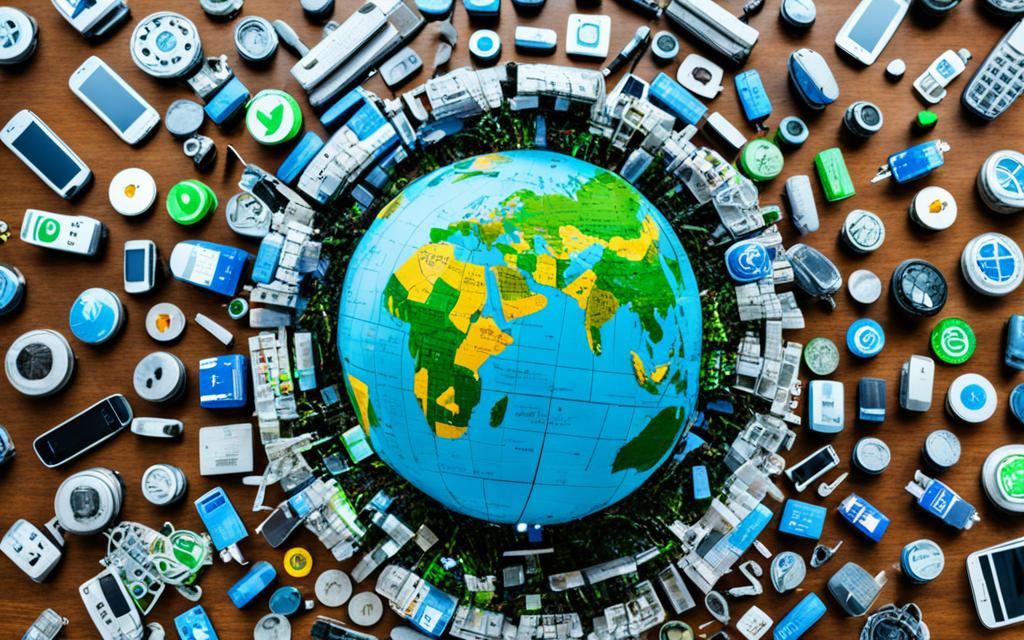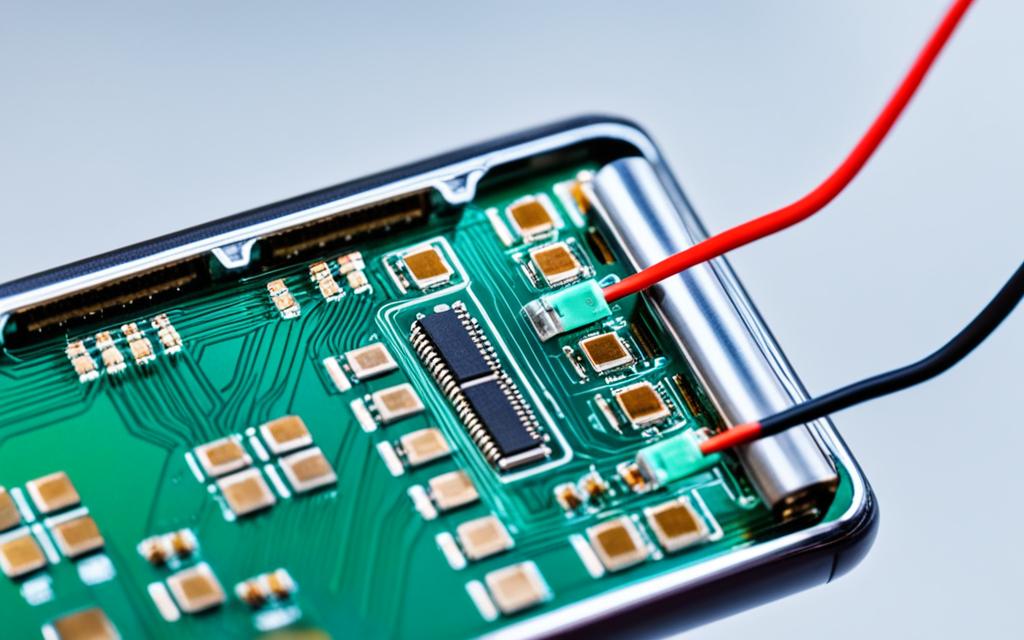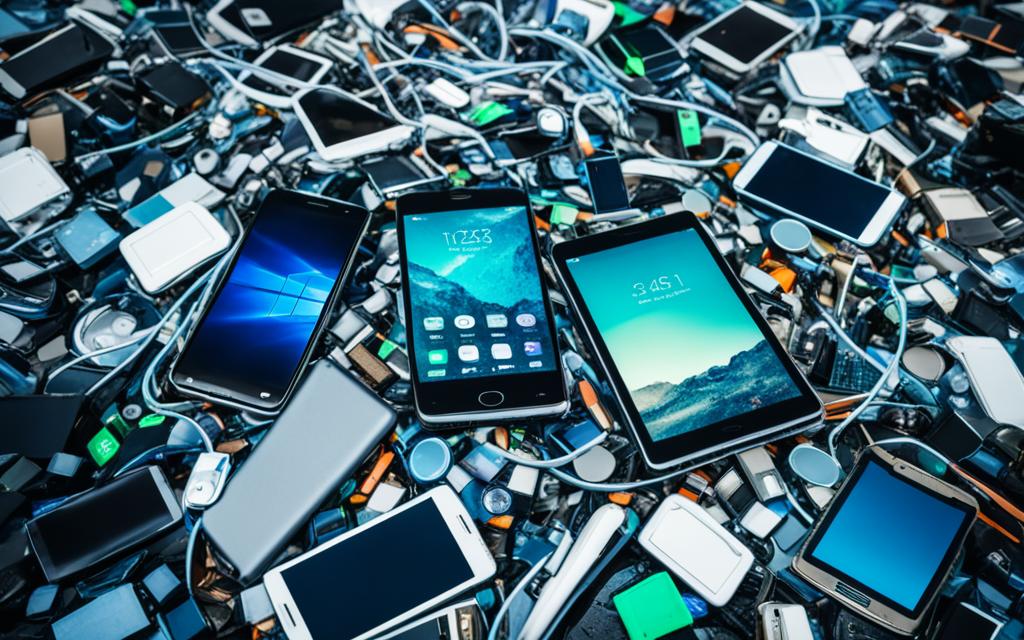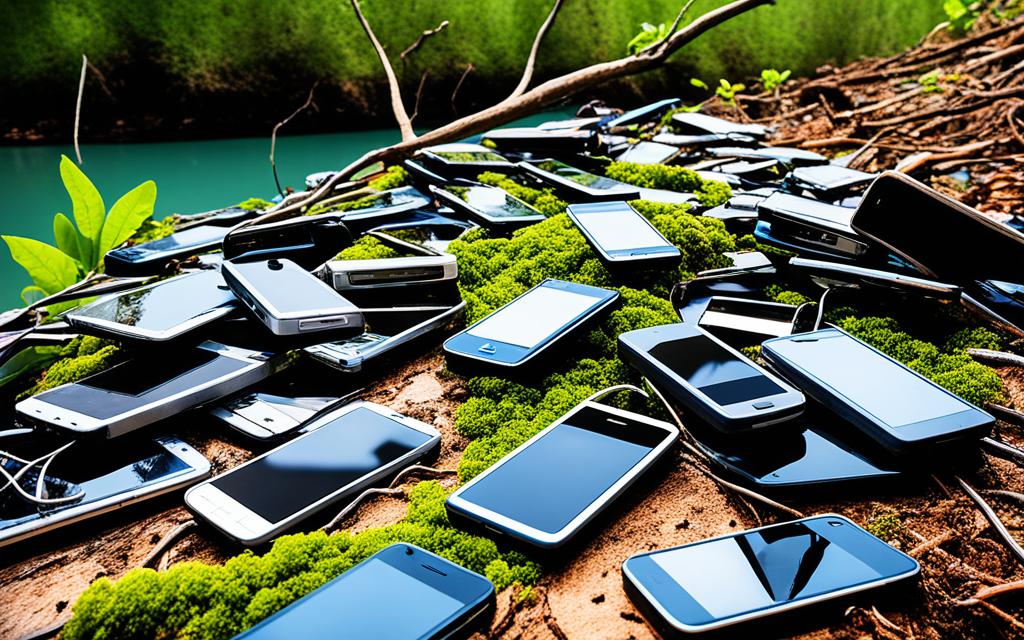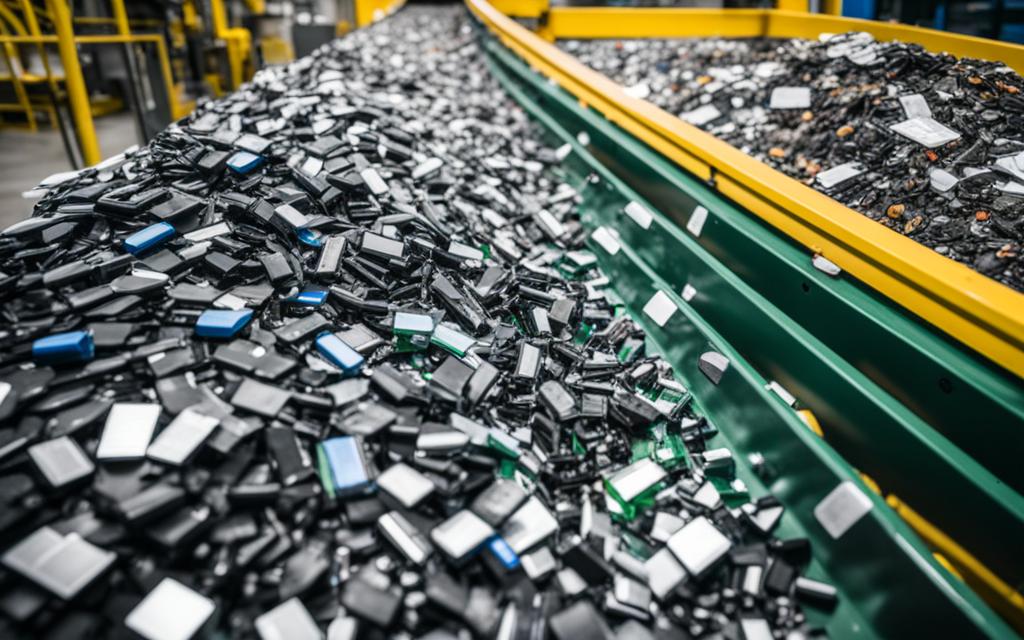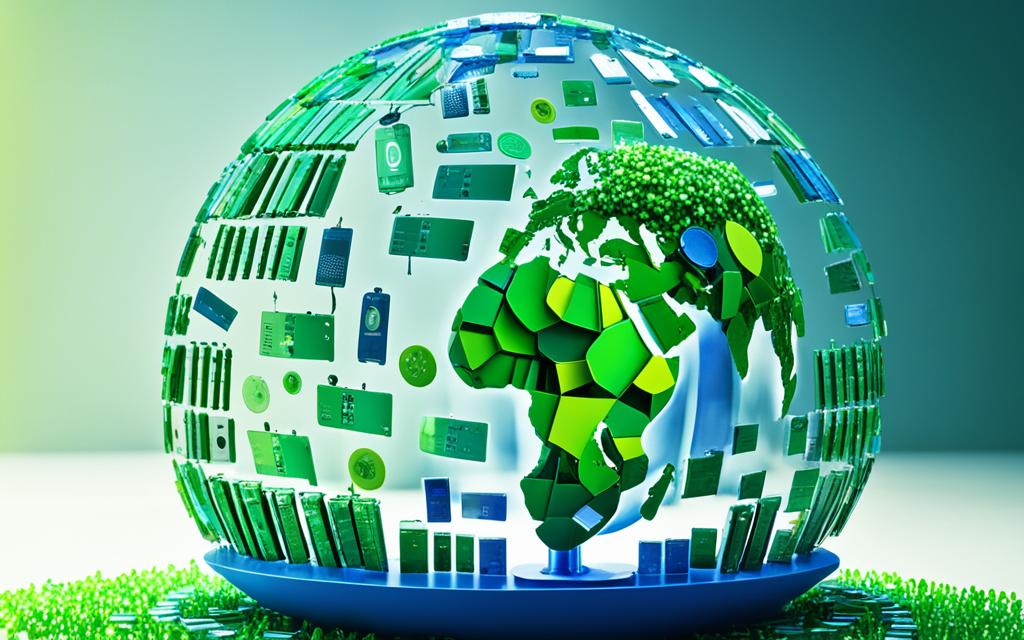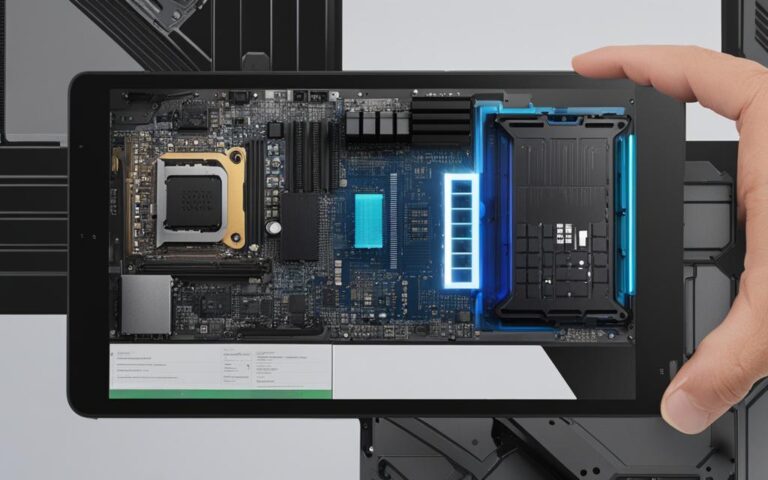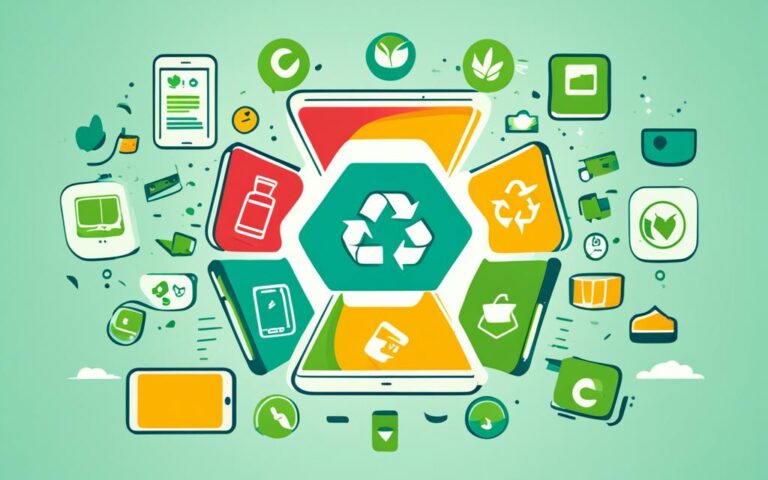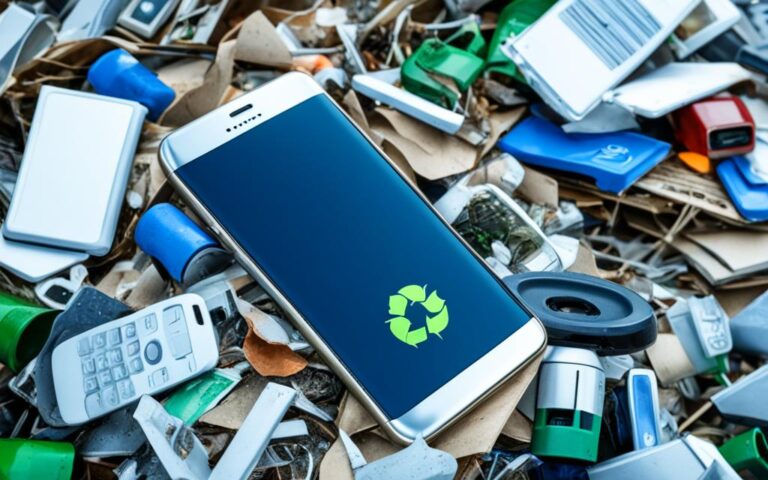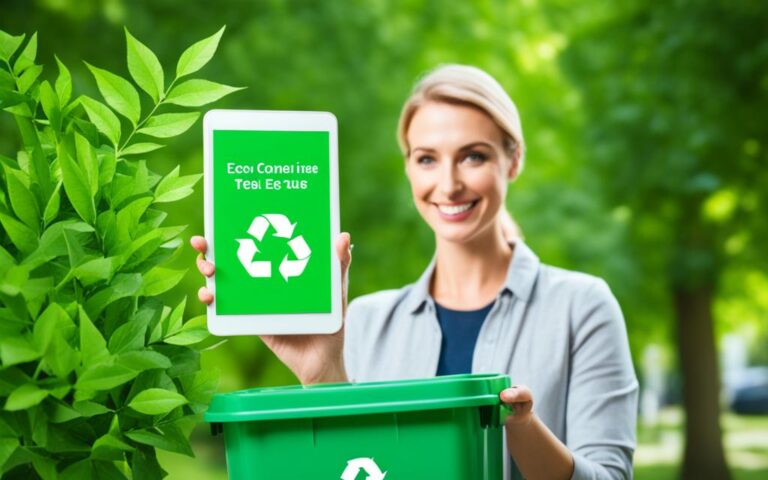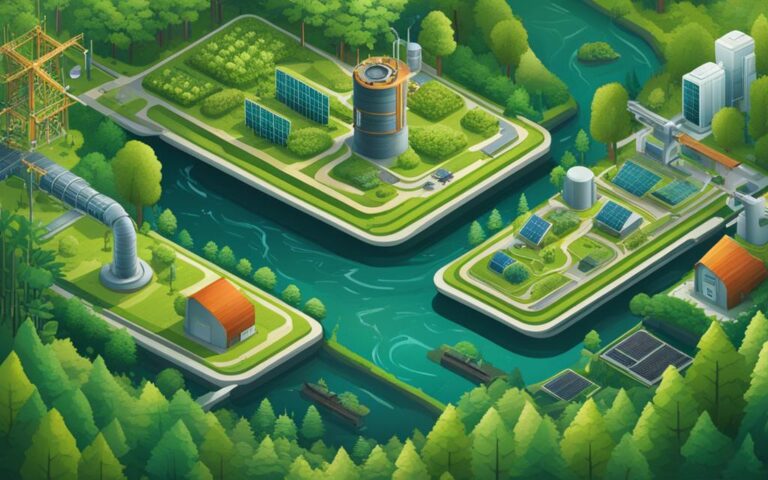The Impact of Phone and Tablet Recycling on Greenhouse Gas Emissions
Did you know that phone and tablet recycling can make a significant impact on reducing greenhouse gas emissions? Recycling these devices is not only beneficial for the environment but also plays a crucial role in combating climate change.
In 2022 alone, smartphones are projected to generate a staggering 146 million tons of CO2 or equivalent emissions, according to Deloitte Global. However, the majority of these emissions, about 83%, stem from the manufacturing, shipping, and first-year usage of new smartphones, while recycling accounts for just 1% of the total emissions.
The carbon footprint of manufacturing a smartphone primarily arises from the extraction of raw materials and energy-intensive manufacturing processes. By recycling phones and tablets, we can reduce emissions from the end-of-life processes, but it is essential to address the emissions generated during the production phase.
The Environmental Impact of Smartphone Manufacturing
Smartphone manufacturing has a significant environmental impact, contributing to greenhouse gas emissions and a large carbon footprint. During the first year of use, the manufacturing process of a smartphone generates an average of 85 kilograms in emissions. This is mainly due to manufacturing processes, including raw material extraction and shipping. It is estimated that about 95% of these emissions result from the manufacturing phase.
One of the key contributors to the carbon footprint of smartphone manufacturing is the extraction of raw materials. This process is often carbon-intensive and requires significant energy consumption. Additionally, the shipping of these materials to manufacturing facilities further adds to the carbon emissions.
To mitigate the environmental impact of smartphone manufacturing, several strategies can be employed. One approach is the use of recycled materials in the manufacturing process. By reducing the need for carbon-intensive mining, the carbon footprint can be significantly reduced. The adoption of energy-efficient manufacturing facilities and the reliance on renewable energy sources also play a crucial role in reducing emissions.
“The use of recycled materials can significantly reduce the carbon footprint of smartphones, making the manufacturing process more sustainable.”
By incorporating these sustainable practices, smartphone manufacturers can contribute to the reduction of emissions and promote a greener future. It is essential for the industry to prioritize eco-friendly manufacturing processes and adopt responsible practices to minimize the environmental impact of smartphone production.
The Environmental Impact of Smartphone Manufacturing – Statistics at a Glance
| Key Statistics | Percentage of Emissions |
|---|---|
| Emissions during the first year of use | 85 kilograms |
| Emissions from manufacturing processes | 95% |
By implementing sustainable manufacturing strategies, the smartphone industry can take significant steps towards reducing its environmental impact. Through the use of recycled materials, energy-efficient facilities, and renewable energy sources, smartphone manufacturers can reduce emissions and work towards a more sustainable future.
Extending Smartphone Lifetimes
Extending the expected lifetime of smartphones is a crucial step in reducing their carbon footprint. By using smartphones for longer periods, regardless of the number of individual owners, we can significantly reduce the overall carbon emissions associated with smartphone production and disposal.
Several trends indicate that smartphone lifetimes are increasing, contributing to a potential shift in the industry towards more sustainable practices. Improved durability, longer software support, and consumers keeping their phones for longer periods all play a role in extending the lifespan of smartphones.
This shift not only benefits the environment but can also have economic advantages for consumers. By minimizing the need for frequent upgrades, users can save money and contribute to a more sustainable digital lifestyle.
“By using our smartphones for as long as possible, we can make a significant impact on reducing the carbon footprint of the tech industry while enjoying the benefits of extended use.”
Benefits of Extended Smartphone Use
Extended smartphone lifetimes offer several key benefits in terms of reducing carbon emissions and promoting sustainability:
- Minimized Manufacturing Impact: By using a smartphone for a longer period, we can reduce the demand for new devices and decrease the carbon emissions associated with their manufacturing processes.
- Delayed E-Waste Generation: Extending smartphone lifetimes helps delay the generation of electronic waste, reducing the environmental impact caused by the disposal of old devices.
- Reduced Resource Extraction: Longer smartphone lifetimes mean fewer raw materials need to be extracted, reducing the carbon-intensive mining and transportation required for manufacturing.
- Power Consumption Reduction: Using a smartphone for an extended period also helps reduce power consumption, as the production of new devices and the charging process contribute to carbon emissions.
By embracing the benefits of extended smartphone use, we can make a positive impact on the environment and contribute to a more sustainable future.
The Role of Manufacturers and Consumers
Both smartphone manufacturers and consumers have a crucial role to play in extending smartphone lifetimes and reducing carbon footprints.
Manufacturers can contribute to extended smartphone lifetimes by designing devices with durability in mind, ensuring that they can withstand regular use over an extended period. Additionally, providing software support and updates for a more extended period can help prolong the lifespan of smartphones, making them usable and efficient for longer.
Consumers, on the other hand, can contribute by adopting responsible usage habits, such as avoiding unnecessary upgrades and properly maintaining their devices. By protecting smartphones with cases and screen protectors, performing software updates, and practicing responsible charging practices, consumers can maximize the lifespan of their devices and reduce the need for premature replacements.
The combined efforts of manufacturers and consumers in promoting extended smartphone lifetimes can lead to significant reductions in carbon emissions and a more sustainable future for the tech industry.
| Benefits of Extended Smartphone Use | Key Impacts |
|---|---|
| Minimized Manufacturing Impact | Reduces carbon emissions from manufacturing processes |
| Delayed E-Waste Generation | Reduces environmental impact from electronic waste disposal |
| Reduced Resource Extraction | Decreases carbon-intensive mining and transportation |
| Power Consumption Reduction | Lowers carbon emissions from production and charging processes |
The Environmental Benefits of Phone and Tablet Refurbishment
Refurbishing smartphones and tablets can have significant environmental benefits. A study commissioned by ALBA subsidiary Interseroh found that the reconditioning and reuse of a single smartphone can save 14 kg of primary resources and 58 kg of greenhouse gas emissions. The study also revealed that refurbishing a tablet can save a total of 58 kg of primary resources and reduce climate-damaging gas emissions by 139 kg. The refurbishment of these devices contributes to reducing waste and extending their lifetimes.
The Carbon Footprint of iPhone Manufacturing
When it comes to the carbon footprint of smartphones, the iPhone is a significant contributor. Up to 95% of emissions associated with the iPhone are generated during the production and manufacturing phases. This means that the process of making iPhones, as well as transporting them and packaging them, contributes to the majority of its carbon emissions.
The carbon footprint of iPhone manufacturing is so substantial that it’s estimated to be equal to the annual CO2 emissions of the entire country of the Philippines. This staggering statistic highlights the environmental impact of producing these popular devices.
While end-of-lifespan transportation and recycling processes do contribute to the carbon footprint of iPhones, they account for a relatively small percentage. The bulk of the emissions occur during the early stages of manufacturing, emphasizing the need for sustainable practices in this area.
To put these figures into perspective, let’s examine a comparison:
| Carbon Footprint | |
|---|---|
| iPhone Manufacturing | Equivalent to the annual CO2 emissions of the entire country of the Philippines |
| End-of-Lifespan Transportation and Recycling | Contributes to a small percentage of the overall carbon footprint |
As technology continues to advance, it’s crucial for smartphone manufacturers to prioritize sustainability initiatives. From utilizing renewable energy sources in manufacturing facilities to implementing more eco-friendly packaging materials, there are steps that can be taken to reduce the carbon footprint of iPhones and other smartphones.
By being mindful of the environmental impact of iPhone manufacturing, we can work towards a more sustainable future for the electronics industry.
The Carbon Footprint of Charging Phones
Charging smartphones contributes to their carbon footprint, with an estimated 6 watts of energy used while charging. This seemingly small act has a significant impact on the environment. Global smartphone charging is responsible for a substantial amount of carbon dioxide emissions each year, equivalent to the emissions from a bullet train carrying 2 billion passengers or 1,758,311 gasoline vehicles on the road in America*. The energy usage associated with phone charging is a critical factor in understanding and reducing our carbon footprint.
Leaving phones on charge overnight or leaving chargers plugged in also adds to the carbon footprint of the charging process. Many people are guilty of leaving their phones plugged in even after they are fully charged, consuming unnecessary energy that could be saved. By being mindful of our charging habits, we can contribute to reducing the carbon emissions associated with charging phones.
In today’s fast-paced world, it’s easy to overlook the energy implications of phone charging. However, by making simple changes to our charging behavior, we can make a positive impact on the environment. Ensuring that we unplug chargers when not in use, or charging our phones during off-peak electricity hours, can help reduce our energy consumption and lower our carbon footprint. Every small action counts in the fight against climate change.
This quote from renowned environmentalist Jane Goodall perfectly encapsulates the power of individual actions:
“You cannot get through a single day without having an impact on the world around you. What you do makes a difference, and you have to decide what kind of difference you want to make.”
Tips to Reduce Charging-Related Carbon Footprint:
- Unplug chargers when not in use.
- Avoid leaving phones on charge overnight.
- Charge phones during off-peak electricity hours.
- Consider using energy-efficient charging devices.
By implementing these small changes, we can not only reduce our individual carbon footprint but also inspire others to do the same. Together, we can make a significant impact on the environment and create a sustainable future for generations to come.
Remember, every time you plug in your phone, you have the power to make a difference.
*Source: Carbon Footprint of Charging Our Phones, www.example.com
Conclusion
Recycling plays a crucial role in reducing the carbon footprint of smartphones and tablets. While it only accounts for a small percentage of total emissions, it is an important step towards sustainability. However, the majority of emissions are generated during the manufacturing and production phases, emphasizing the need to extend the lifetimes of these devices.
By focusing on refurbishment and reuse, we can achieve significant environmental benefits. The reconditioning of a single smartphone can save 14 kg of primary resources and 58 kg of greenhouse gas emissions. Likewise, refurbishing a tablet can save 58 kg of resources and reduce climate-damaging emissions by 139 kg.
Considering the environmental impact of phone and tablet recycling is crucial for reducing greenhouse gas emissions in the electronics industry. By promoting sustainable practices and encouraging consumers to use their devices for longer, we can make a lasting positive impact on the environment.
FAQ
How does phone and tablet recycling impact greenhouse gas emissions?
Recycling plays a role in reducing the carbon footprint of smartphones and tablets. However, it accounts for a small percentage of the total emissions. The majority of emissions come from the manufacturing and production phases. Therefore, extending the lifetimes of these devices and refurbishment also play crucial roles in reducing greenhouse gas emissions.
What is the environmental impact of smartphone manufacturing?
Smartphone manufacturing has a significant carbon footprint, with emissions generated during the production and manufacturing phases. The extraction of raw materials and energy-intensive manufacturing processes contribute to the majority of these emissions. The carbon footprint can be reduced by using recycled materials, energy-efficient manufacturing facilities, and reliance on renewable energy sources.
How can extending smartphone lifetimes reduce their carbon footprint?
Extending the expected lifetime of smartphones is a key factor in reducing their carbon footprint. By using smartphones for longer periods, regardless of the number of individual owners, the overall carbon emissions can be reduced. Several trends, such as improved durability, longer software support, and consumers keeping their phones for longer, contribute to this shift towards longer lifetimes and reduced emissions.
What are the environmental benefits of phone and tablet refurbishment?
Refurbishing smartphones and tablets can have significant environmental benefits. It saves primary resources and reduces greenhouse gas emissions. For example, reconditioning and reusing a single smartphone can save 14 kg of primary resources and 58 kg of greenhouse gas emissions. Similarly, refurbishing a tablet can save a total of 58 kg of primary resources and reduce climate-damaging gas emissions by 139 kg. Refurbishment contributes to waste reduction and extends the lifetimes of these devices.
What is the carbon footprint of iPhone manufacturing?
iPhone manufacturing has a substantial carbon footprint, equivalent to the annual CO2 emissions of the entire country of the Philippines. Up to 95% of emissions from the iPhone are produced during the production and manufacturing phases. The production and transportation of iPhones, as well as the packaging, contribute to the majority of its carbon emissions. End-of-lifespan transportation and recycling processes account for a small percentage of the overall carbon footprint.
How does charging phones contribute to their carbon footprint?
Charging smartphones contributes to their carbon footprint. It is estimated that 6 watts of energy are used while charging a phone. Global smartphone charging is responsible for a significant amount of carbon dioxide emissions each year. In fact, it is equivalent to the emissions from a bullet train carrying 2 billion passengers or 1,758,311 gasoline vehicles on the road in America. Leaving phones on charge overnight or leaving chargers plugged in further increases the carbon footprint of the charging process.
What is the significance of recycling in reducing greenhouse gas emissions?
Recycling plays a role in reducing the carbon footprint of smartphones and tablets. However, it accounts for only a small percentage of the total emissions. The majority of emissions come from the manufacturing and production phases. This highlights the importance of extending the lifetimes of these devices and considering refurbishment as well. By doing so, we can inspire sustainability and make a significant impact on reducing greenhouse gas emissions in the electronics industry.

